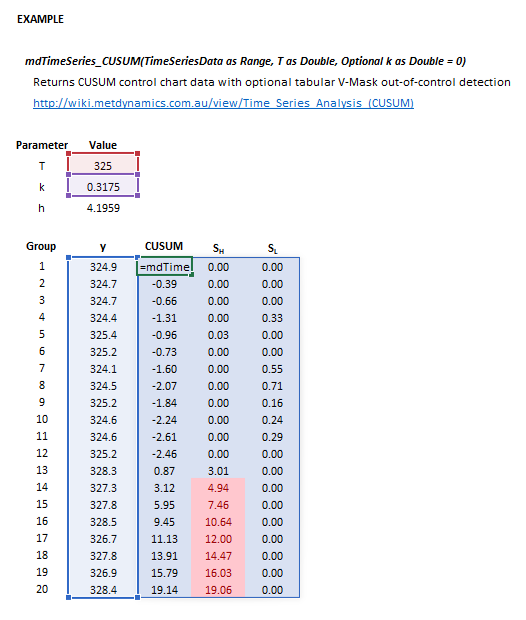Time Series Analysis (CUSUM)
Jump to navigation
Jump to search
Description
This article describes a method for preparing a Cumulative Sum (CUSUM) control chart.[1][2]
Model theory
Excel
The CUSUM control chart may be invoked from the Excel formula bar with the following function calls:
=mdTimeSeries_CUSUM(TimeSeriesData as Range, T as Double, Optional k as Double = 0)
Invoking the function with no arguments will print Help text associated with the model, including a link to this page.
The input parameters and calculation results are defined below in matrix notation, along with an example image showing the selection of the same cells and arrays in the Excel interface:
|
| ||||
References
- ↑ NIST/SEMATECH, 2012. e-Handbook of Statistical Methods, http://www.itl.nist.gov/div898/handbook/, accessed 24 March 2022.
- ↑ Napier-Munn, T.J., 2014. Cunning solutions to process improvement. 12th Mill Operators' Conference, Townsville, Qld, 1-3 September 2014.
![{\displaystyle {\begin{aligned}{\mathit {TimeSeriesData}}&={\begin{bmatrix}y_{1}\\\vdots \\y_{t}\\\end{bmatrix}}\\\\{\mathit {T}}&={\big [}T{\big ]}\\\\{\mathit {k}}&={\big [}k{\big ]}\\\end{aligned}}}](https://wikimedia.org/api/rest_v1/media/math/render/svg/c3e4a730e81ed5cfaa9f59c2b094a5f15951e9cc)









